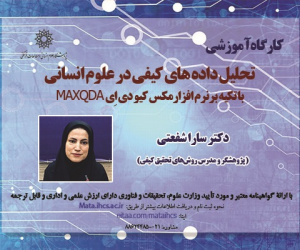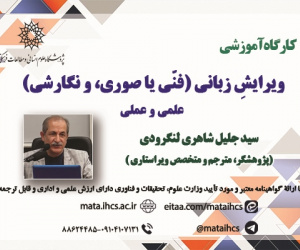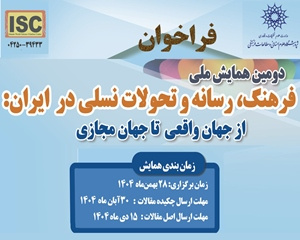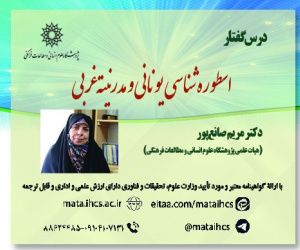جایگاه مفهوم مسکن قابل استطاعت در برنامه های مسکن ایران (مقاله علمی وزارت علوم)
درجه علمی: نشریه علمی (وزارت علوم)
آرشیو
چکیده
مقدمه: مسکن قابل استطاعت یکی از مسائل حیاتی اقتصادی و اجتماعی، این مفهوم به توانایی افراد و خانواده ها برای تأمین مسکن مناسب با در نظر گرفتن درآمد و هزینه های مسکن اشاره دارد و به طور سنتی بر اساس معیارهای اقتصادی تعریف و ارزیابی می شود. هدف پژوهش: هدف بررسی جایگاه مسکن قابل استطاعت در برنامه های توسعه پس از انقلاب و تحلیل شاخص های مورداستفاده در سیاست های آن است. روش شناسی: روش پژوهش تحلیل محتوای کیفی است. با استفاده از مطالعات اسنادی و بررسی اسناد قانونی و برنامه های موجود، سیاست های رفاهی مسکن در دوران پس از انقلاب اسلامی در ایران بررسی و با استناد به شاخص های جهانی مسکن قابل استطاعت توصیف و تحلیل شده است. یافته ها و بحث: سیاست های مسکن پس از انقلاب، رویکردهای مختلفی برای تأمین مسکن قابل استطاعت اتخاذ کرده، با این حال، بسیاری از این تلاش ها بر کوچک سازی متمرکز بوده اند. این امر منجر به ایجاد مسکن های کوچک و ناپایدار و حاشینه نشینی شده است که با نیازهای خانواده ها متناسب نیستند. همچنین عدم وضع مالیات های مؤثر برای کنترل سوداگری زمین و مسکن و محدودیت های توسعه شهری، از جمله عواملی است که عرضه زمین را محدود و باعث افزایش قیمت زمین و مسکن شده است. نتیجه گیری: در برنامه های توسعه اقتصادی، اجتماعی و فرهنگی ایران، مسکن به عنوان مولفه ای مهم شناخته می شود که به کاهش نابرابری ها، تقویت عدالت اجتماعی، بهبود کیفیت زندگی و تأمین مسکن برای اقشار کم درآمد و محروم جامعه می پردازد. این برنامه ها شامل بهسازی زیرساخت های مسکن، حمایت از تولیدکنندگان واحدهای مسکونی کوچک و تضمین مسکن برای گروه های آسیب پذیر است. با این حال، به نظر می رسد که در برخی از این برنامه ها به مسکن توجه کافی نشده است، که می تواند نشان دهنده عدم هماهنگی در برنامه ریزی باشد. شفافیت، نظارت دقیق، بهسازی و تمرکز بر مسکن می تواند به عدالت اجتماعی و کاهش نابرابری کمک کرده و باید در همه برنامه های توسعه در اولویت قرار گیرد.Elucidating the Position of Affordable Housing Concept in Iran's Housing Programs
Introduction: Housing, as one of the basic human needs, can be seen as a connecting link between environment, society, and economy. Affordable housing is recognized as a vital economic and social issue with wide-ranging implications for individuals, families, economy and environment. Affordable housing, known as »housing affordability«, is an important economic and social concept in the housing sector, relating to individuals' and families' ability to access suitable housing considering their income and housing expenses. Traditionally, housing affordability is defined and evaluated based on economic criteria. A fundamental part of this research is the theory that economic affordability is influenced not only by housing costs and income but also by a broader spectrum of criteria affecting a household's quality of life.
The Purpose of the Research: Housing provision is a phenomenon observed in many societies. Conditions in which households spend more than one-third of their gross income on housing costs are prevalent. In this research, we aim to examine the position of affordable housing in Iran's housing programs post-Islamic Revolution and analyze the indicators used to evaluate affordable housing. This article seeks to explore the relationship between affordable housing and housing policies in the post-Islamic Revolution era in Iran. Moreover, credible sources and previous research have been utilized as primary tools for evaluating affordable housing. This research analyze housing policies within the framework of market and economic changes in Iran and its changes that have occurred in these policies over time.
Methodology: This research employs qualitative content analysis method to examine housing policies after the Islamic Revolution. The analysis is based on studying the housing policy-making process and the role of post-revolutionary governments in this policy-making. The workflow begins with data collection using documentary studies and examining the historical context of housing welfare policies through legal documents and existing programs. Then, utilizing qualitative content analysis method, the collected data are categorized and analyzed. Finally, the description and analysis of the subject are conducted based on global indicators of affordable housing in light of the findings from documents and legal sources. The time frame of the study covers the period from the beginning of the revolution to the end of the seventh development plan.
Findings and Discussion: Controls on urban expansion diminished, leading to increased construction activities around cities. People struggling with heavy rent burdens and rural migrants quickly settled on the outskirts of cities. Although there was an increase in residential construction during this period, investment in it decreased due to a reduction in the infrastructure of the produced units. Additionally, construction activities faced recession during the imposed war period, exacerbating the recession due to war-related issues and restrictions. Despite attention to the housing sector in the Islamic Republic's development programs, housing plans were not fully implemented, mainly due to private sector uncertainty in investment, rising prices, and infrastructure costs. Efforts have been made in the physical dimensions, housing provision, and construction of residential units in rural areas, as well as in housing standards and quality, and the redevelopment of deteriorated areas. However, in economic dimensions, financial facilities for low-income groups, changes in financial policies, and housing finance provisions have not been emphasized in affordable housing programs.
Conclusion: In the seven economic, social, and cultural development plans of the Islamic Republic of Iran, housing has been recognized as a significant component. This attention to housing aims to reduce inequalities, foster social justice, improve the quality of life, and provide housing for low-income and deprived segments of society. Various programs have addressed housing infrastructure, supported small housing unit producers, and ensured housing for vulnerable groups. However, in some programs, there is insufficient focus on housing, indicating a lack of coordination between housing and other planning components. Improving and paying attention to housing can significantly contribute to social justice and inequality reduction and should be prioritized in all development programs. In summary, attention to housing in Iran's development programs is essential, with emphasis on aspects such as developing housing infrastructure for the needy, providing housing programs tailored to the needs of different regions, utilizing innovative technologies, enhancing construction quality, and considering housing as a key component in sustainable development and environmental protection. Proper planning in this regard can aid in sustainable development and economic and social growth.








